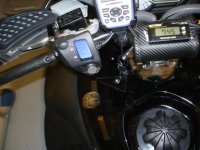THKSNOW
Smooth Operator
- Joined
- Aug 11, 2006
- Messages
- 933
- Reaction score
- 127
- Points
- 928
- Location
- Millecoquin Lake, Engadine, MI
- Country
- USA
- Snowmobile
- 2013 RS Venture GT
If you didn't see it already you can look here for more info:
http://www.ty4stroke.com/viewtopic.php? ... a1c0ca9c9a
http://www.ty4stroke.com/viewtopic.php? ... a1c0ca9c9a







